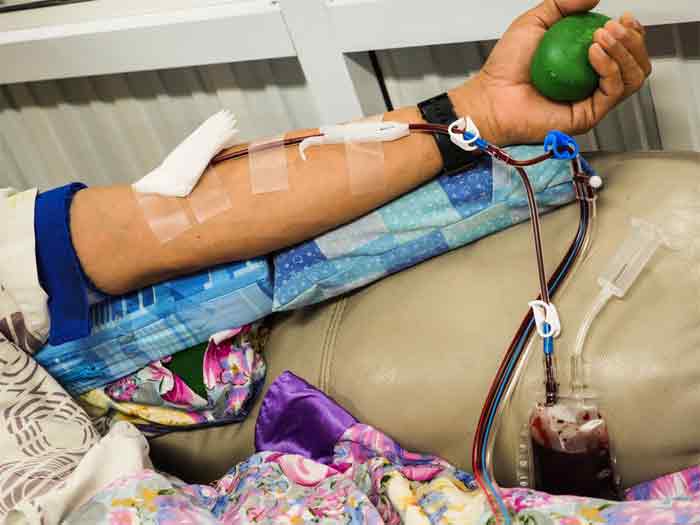1) What is plateletpheresis?
Plateletpheresis is a special form of blood donation. During plateletpheresis, only the platelets are removed from the donated blood. The term derives from the words platelet and apheresis. Apheresis is a Greek word that means extraction, removal, separation.
2) What are platelets?
Platelets are cellular blood components that help blood to clot. What is more, platelets are the body’s first line of defense against bleeding. If you sustain a cut, however small, platelets rush to the site of the injury and form a clot, a scab.
3) Who needs platelets?
People with a low number of platelets circulating in their blood (low platelet count) or with dysfunctional platelets, need regular platelet transfusions. Platelet transfusions are also vital to cancer patients undergoing chemotherapy and/or radiation treatments as well as patients with certain anemias (aplastic anemia) and blood coagulation disorders.

4) Is plateletpheresis the only way to remove platelets from whole blood?
No. Platelets can also be extracted from a whole-blood donation in a specialized centrifuge.
5) Why plateletpheresis?
It can take up to four whole blood units to harvest the amount of platelets we can get from a single plateletpheresis unit. One unit of platelets harvested from plateletpheresis can help save the lives of two or three patients.
6) What is plateletpheresis like?
The procedure is similar to a whole blood donation. One difference is that the platelet donor is attached to a cell separator, a computer-controlled machine that draws donor blood, removes the platelets, and returns the plasma and all other blood components back to the donor. There are approximately 6-8 draw-centrifuge-return cycles per plateletpheresis session. The whole process (including a mini-physical) takes about 2 hours.
7) Is plateletpheresis safe?
Absolutely safe! All the materials (tubing, needles, plastic software to collect the blood) are sterile and destroyed after each session. There is no risk of infection whatsoever.
8) Are there any adverse effects?
Platelet donors may experience nausea or fatigue during plateletpheresis. The most common side effect is a tingling sensation in the lips, which is easily counteracted by administering calcium-containing antacid tablets.
9) How often can one donate platelets?
Every 3-28 days, but no more than 24 times a year.
10) Is there a need for platelets?
Yes. Platelets have a life span of only 5 days, so there is a high need for a constant supply.
11) What are the requirements for being a plateletpheresis donor?
Details may differ from blood clinic to blood clinic, but essentially they are the same as for whole blood donors. For example, you need to be 18-60 years old and weigh no less than 110 lbs. There may be some extra blood tests to measure your platelet count and special antigen compatibility. You cannot take aspirin or any other anti-inflammatory drugs for at least 36 hours before donating platelets.
